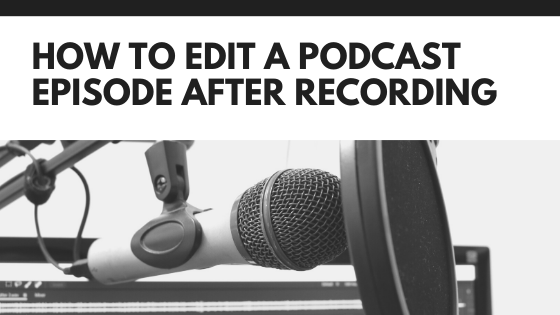After you’ve recorded your episode chances are you didn’t get it perfect. No worries because the show I pre-recorded and you’ll be able to tweak it before sending out. That’s where editing comes into play. This process is not hard but takes some time to complete. Here’s a four-step process you can use today to edit your podcast.
Step 1: Cut what you don’t want
The main part of editing is cutting what you don’t want. This includes taking out double-takes, umms and extra space in the interview. Take the time to go through your episode and take out what you don’t want to keep.
you can do this is by highlighting the sections of the audio you don’t want, and delete it. The aim is to ensure your conversation runs smooth and natural.
After you make your cuts you can insert a couple of seconds of space for your music bed, and sponsored messages. This is the final part of this process.
Step 2: Level the volume of the interview
Getting the conversation on one consistent level is the next part of the process. You can achieve this using a compressor or limiter. Open the compressor in your editing programme, Set the attack to 0 and the release to about 100. Set the ratio at 10:1. After that set the threshold to the average level of your interview. What you’ve just done is to use the compressor to make your interview consistent.
Step 3: remove noise if it’s there
Noise reduction is the last part of the process. This is pretty simple. Select a portion of the noise you want to remove. Open the noise reduction plugin in your editing software and select capture noise profile. Then deselect the audio and reopen the noise reduction plugin. Make adjustments to remove the noise to taste. Your aim is not to remove everything but to turn it down to a level where it is not noticeable.
Step 4: Save and export you show
Once you are finished editing save your edit. You don’t want to lose all that work you just did. Also, this is a good time to add your intro and outro music for your podcast. Once you’re done, export your final episode. Label your file properly and you’re done.
Pat yourself on the back you’ve just edited your podcast episode.
